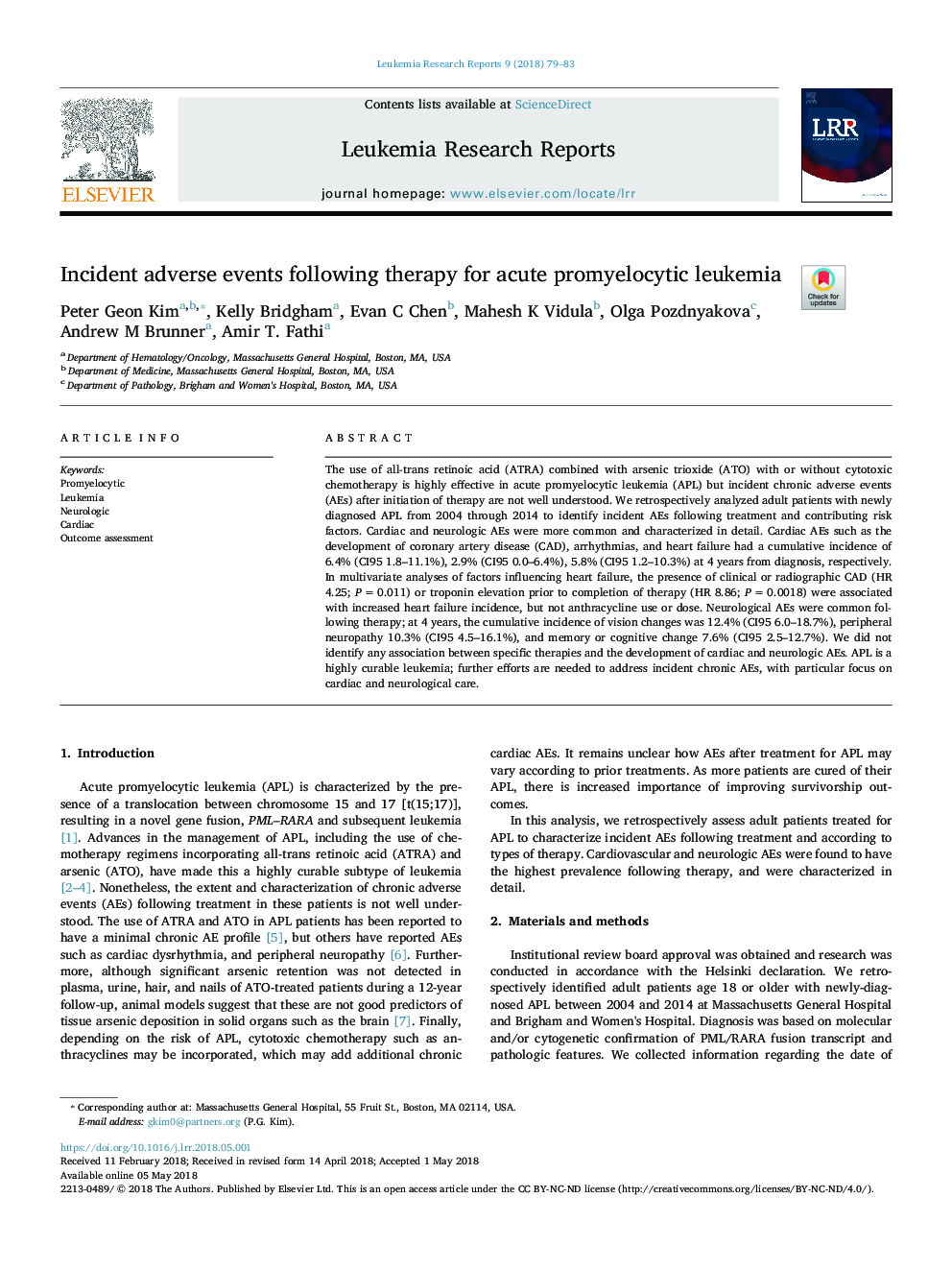| Article ID | Journal | Published Year | Pages | File Type |
|---|---|---|---|---|
| 8453552 | Leukemia Research Reports | 2018 | 5 Pages |
Abstract
The use of all-trans retinoic acid (ATRA) combined with arsenic trioxide (ATO) with or without cytotoxic chemotherapy is highly effective in acute promyelocytic leukemia (APL) but incident chronic adverse events (AEs) after initiation of therapy are not well understood. We retrospectively analyzed adult patients with newly diagnosed APL from 2004 through 2014 to identify incident AEs following treatment and contributing risk factors. Cardiac and neurologic AEs were more common and characterized in detail. Cardiac AEs such as the development of coronary artery disease (CAD), arrhythmias, and heart failure had a cumulative incidence of 6.4% (CI95 1.8-11.1%), 2.9% (CI95 0.0-6.4%), 5.8% (CI95 1.2-10.3%) at 4 years from diagnosis, respectively. In multivariate analyses of factors influencing heart failure, the presence of clinical or radiographic CAD (HR 4.25; Pâ¯=â¯0.011) or troponin elevation prior to completion of therapy (HR 8.86; Pâ¯=â¯0.0018) were associated with increased heart failure incidence, but not anthracycline use or dose. Neurological AEs were common following therapy; at 4 years, the cumulative incidence of vision changes was 12.4% (CI95 6.0-18.7%), peripheral neuropathy 10.3% (CI95 4.5-16.1%), and memory or cognitive change 7.6% (CI95 2.5-12.7%). We did not identify any association between specific therapies and the development of cardiac and neurologic AEs. APL is a highly curable leukemia; further efforts are needed to address incident chronic AEs, with particular focus on cardiac and neurological care.
Related Topics
Life Sciences
Biochemistry, Genetics and Molecular Biology
Cancer Research
Authors
Peter Geon Kim, Kelly Bridgham, Evan C Chen, Mahesh K Vidula, Olga Pozdnyakova, Andrew M Brunner, Amir T. Fathi,
